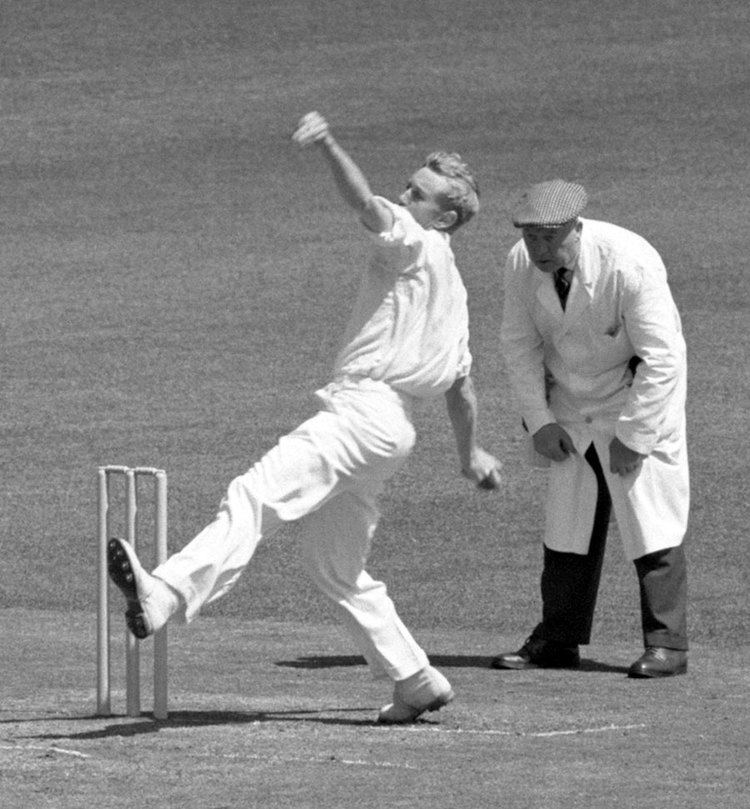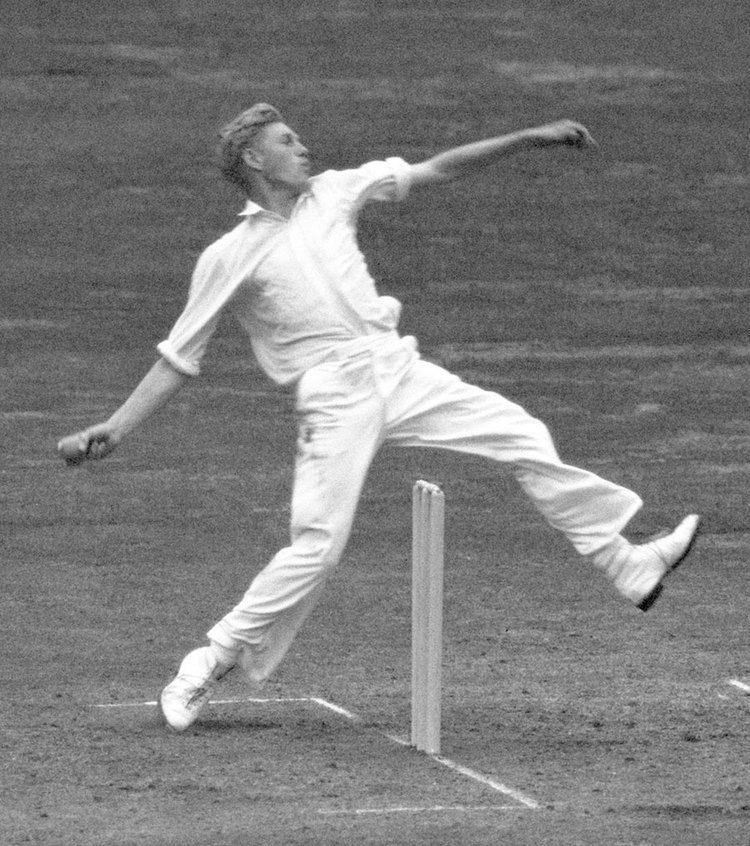Batting style Right-hand bat Role Cricket Player Name Geoff Griffin | National side South African Bowling style Right-arm fast | |
 | ||
Full name Geoffrey Merton Griffin Died November 16, 2006, Durban, South Africa | ||
Geoffrey Merton "Geoff" Griffin (12 June 1939 – 16 November 2006) was a cricketer who played two Tests for South Africa in 1960. In his second Test appearance in 1960 at Lord's, he became the first (and, as of November 2014, only) South African cricketer to take a hat-trick in a Test match, and also the first and only cricketer to take a Test hat-trick at Lord's. He is best known for being no-balled for throwing in his second Test and the exhibition match that followed, and never having played Test cricket again.

Griffin was born in Greytown in the former Natal Province and was educated at Durban High School. He was tall and blond, and excelled in many sports, playing hockey for Rhodesia and under-19s rugby for Natal. He was also Natal champion in the high jump, long jump, triple jump and pole vault.
Griffin suffered an accident in childhood which rendered him unable to straighten his right arm. There was continuing controversy about bowlers "throwing" or "chucking" the ball (that is, flexing their elbow in the action of bowling the ball, which is contrary to the Laws of Cricket). The issue had been controversial since the editor of Wisden, Sydney Pardon, claimed that Australian fast bowler Ernest Jones was throwing in the tour of England in 1896, and then Jones and C. B. Fry were both no-balled in the Melbourne Test in 1897. The issue achieved renewed prominence following the Ashes series in Australia in 1958–59, when Australians Ian Meckiff and Gordon Rorke were suspected of throwing. Other fast bowlers, such as West Indies' Charlie Griffith and New Zealand's Gary Bartlett were also suspected. The MCC was determined to stamp out the problem before the Ashes series in England in 1961, and English umpires were instructed to strictly enforce the rule against throwing in 1960.
Griffin made his first-class cricket debut for Natal in the 1957–58 South African domestic season, as a fast bowler. Despite being no-balled in South African provincial matches in the 1959–60 season, Griffin finished at the top of the averages, with 35 wickets at a bowling average of 12.23, and was selected to tour England in 1960, aged 20. Griffin was no-balled eight times during the tour match against the MCC at Lord's in May 1960, the first time that a touring player was called for throwing, and no-balled again several times by various umpires in matches against the counties. His tried to change his action at Alf Gover's indoor school, and was not called once in the 42 overs that he bowled in the 1st Test at Edgbaston, although his pace was much reduced. In the search for quicker deliveries, he fell back into his old faults, and was called in a tour match against Hampshire.
English umpires Frank Lee and Syd Buller repeatedly called Geoff Griffin for throwing in the 2nd Test, at Lord's, starting from his third over. After being no-balled five times on the first day and six times on the second day, he returned for a final bowling spell on Saturday 25 June and dismissed M. J. K. Smith with the last ball of one over, caught behind by John Waite for 99, and then bowled Peter Walker and Fred Trueman with the first two balls of his next over. This was the first Test cricket hat-trick claimed by a South African cricketer. England immediately declared their first innings for 362 with 8 wickets down.
England quickly dismissed South Africa twice to win by an innings and 73 runs, just after lunch on the fourth day, Monday 27 June, with Brian Statham taking 6–62 and 5–34. A 20-over exhibition match was arranged to fill the period until the scheduled presentation of the players to the Queen at tea. Griffin was again repeatedly no-balled in the exhibition match for throwing, and was also no-balled for failing to notify the umpires that he was changing to bowl underarm to complete an over. Griffin later recounted that Donald Bradman came to the dressing room to console him, and let him know that the umpires were acting on order from MCC president Gubby Allen.
Griffin remained on the tour as a batsman, but never played Test cricket again. Many spectators could see no difference between his "legitimate" deliveries, and the ones that were no-balled: many concluded that he threw every delivery. The public saw him as a martyr and scapegoat, and he was warmly applauded by the spectators at all of his subsequent tour matches. None of the controversial Australian bowlers from the 1958–59 Ashes series toured England in 1961.
He moved to play for Rhodesia, but his cricket career ended less than two years later, at the age of 23, after he was no-balled playing in a Currie Cup match against North Eastern Transvaal at Salisbury.
In retirement from cricket, he played club cricket, was a cricket coach, and worked as a hotel manager for South African Breweries in Durban, at the Argyll, and then at the Congela Hotel. He married twice.
Griffin died of a heart attack in Durban.
